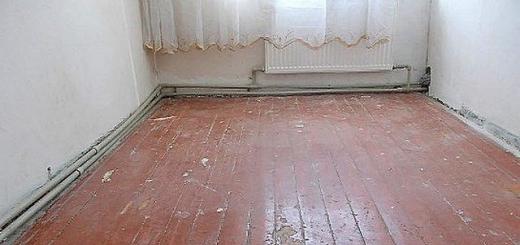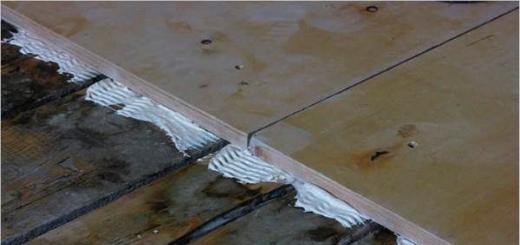A homemade steam generator, or steam gun as it is called, can serve as additional equipment for a sauna stove, or it can be a separate device. Most often, such a device is used in a bathhouse, sauna or hammam to produce soft and medicinal steam created by adding aromatic herbs. A steam generator can be purchased at a specialized store, or you can make it yourself.
Steam generator or steam gun - description, device, principle of operation, types
The healing properties of steam have been known for a long time, since it can have a healing effect on the human body if used in the optimal amount and at a certain temperature. If such a device is installed in the bathhouse, then there is no need to regularly pour water on the stones in order for the required volume of steam to form in the steam room. Also, thanks to the steam gun, water is significantly saved. It does not take up much space, is easy to assemble and does not require a large amount of expensive materials to create it.
Steam gun for sauna stoves
Device
A traditional steam generator is a device equipped with an electric heating element. The operating principle is similar to a regular electric kettle. We pour water into the steam generator, turn on the heater, the liquid boils and steam is formed. The lid of the device is equipped with a special valve, with which you can independently regulate the degree of pressure. As a result, we can independently “create” steam at the required temperature. Steam with a high degree of humidity will create the atmosphere of a traditional Turkish hammam, while hot and dry steam will make you feel like you are in a real Russian bathhouse.
Furnace structure with sauna steam generator
The steam generator can be used in conjunction with a heater. As a result of this “contact”, the steam produced by the device is additionally supplied to the stones for complete heating. Thanks to this scheme, electricity is significantly saved and at the same time the temperature of the stones is reduced, the load on the furnace is reduced and its service life is increased.
If you use a steam generator without a heater, then energy costs will increase significantly, but you will not need to build an expensive large brick oven. In this case, you will only need to choose a heating system for the bath.
A typical “store-bought” steam generator consists of:
- Security sensor.
- Water containers.
- Pump for moving water and steam.
- Preparatory block for water.
- Steam generation unit.
- Control panel.
Outside the device there is an indicator and display that shows all the information about the operation of the device and its programs.
Species and types
Such devices can have manual or automatic water filling. Automatic filling involves connecting the steam generator to the central water supply. Most modern steam generators are equipped with an automatic system, which will itself control the temperature in the steam room. They can also be ceramic and metal.
There are two types of steam generators:

For a steam room with an area of 10–13 m3, you can use a steam gun of 8–9 kW. In a room larger than 15 m3, it is recommended to install 12 kW devices. For a small steam room up to 5 m3, it will be enough to make a steam generator with a capacity of 5 kW.
Devices that have a power of more than 9 kW have a three-phase connection system.
Steam generators can have three types of water heating:
- Electrode. In this case, the current passing through the electrodes through the water heats it to a certain temperature. Such a heater has a simple design (ordinary metal rods act as electrodes) and does not overheat, since it simply will not work without water. But since the electrodes tend to dissolve over time, they will have to be changed periodically.
Electrode heating elements
- Heating elements. Devices of varying power levels are used to heat water.
Heating element for heating water
- Induction. Water is heated in the same way as in a microwave oven. In this case, the water is quickly heated, since the alternating electromagnetic field allows the entire container containing the liquid to be heated at once.
Induction heating element
Are there any fundamental differences between steam generators for baths, saunas and hammam?
Many people are interested in the question, what is the difference between steam generators for a bath, sauna or hammam? Since all three types of structures are intended not only for washing, but also for healing the body, their action is based on the formation of steam. The difference between a bathhouse, a sauna and a hammam is the amount of steam produced, its temperature and humidity level.
Temperature conditions of different types of steam rooms:
- A Finnish sauna must have dry heat - the temperature ranges from 80 to 140°C, the humidity level is from 1 to 15%.
- There must be wet steam in a Turkish hammam - the temperature is maintained at 45°C - the humidity level is 100%.
- In a Russian bath, steam should have an optimal humidity level from 50 to 80%, and the temperature should be maintained from 60 to 80°C.
A “store” steam generator, which has many operating modes for generating steam, is suitable for all types of steam rooms. Using the remote control, you can independently set the temperature of the steam and its volume. Typically, such devices allow you to select temperatures up to 95°C. Also, steam generators for industrial use are equipped with special built-in programs that can independently create a certain temperature and volume of steam output, simulating a real Russian bathhouse, Finnish sauna or Turkish hammam.
The steam that a steam gun creates is softer and more gentle than that from pouring water onto hot stones. Thus, we can say that there are no significant differences in such devices, so they are suitable for all types of steam rooms.
Bath stove with steam gun
It should be noted that the raw steam, which is necessary for the hammam, is not too heavy for the human body, does not give the feeling of a suffocating atmosphere, since the room is heated only to a maximum high temperature of 45°C. And it is with the help of a steam generator that this result can be achieved.
I would like to note that a modern Russian bathhouse is not too different from a Finnish sauna in its design. Therefore, the amount of steam and its temperature in such steam rooms can be coordinated by the visitors themselves. Using a steam generator, you can create conditions in any steam room that are intended for a bathhouse, sauna or hammam.
Preparing to make a cannon for an open heater
The main task when developing a drawing for a steam gun is to ensure that the largest possible area of iron outlets for water comes into contact with the stones in the furnace. The pipes must be placed as close as possible to the stones, which are heated to maximum temperature.
It is very important to use a steam gun in ovens where an open stove is installed. This is due to the fact that it is almost impossible to create good steam that will be suitable for vaping in a traditional sauna from a stove with stones. When water hits the stones, which are located in external areas closer to the visitors and further from the oven, it turns into very damp, coarse-grained steam.
Optimal comfort for people can only be created by dry steam, which is produced during the contact of water with the hottest parts of the stove (the furnace itself and the stones). It is not possible to pour water onto the firebox, since it is separated from the steamer by a large layer of stones, so steam guns were developed to effectively deliver water.
The simplest solution was a cannon made of a steel pipe, which is inserted into the free space of the stove, and then simply laid stones.
Drawing of a simple steam gun
Drawing of the operation of a steam gun
Selecting material for creating a steam gun
We will make the simplest model of a steam gun, which will not require a large amount of expensive materials and at the same time it will be able to fully perform its functions.
Materials
- Corrugated pipe 2 pieces - diameter 4 mm.
- Corrugated pipes 2 pieces - smaller diameter.
- Open heater stove - Shilka model.
- Porcelain balls for placing in the oven.
- Metal funnel.
In order to make such a gun with our own hands, we only need a sharp metal object with which we will make holes in the pipe.
Step-by-step instruction
- We take two corrugated pipes of the same size (selected depending on the size of the free space in the oven). We make holes Ø 8–10 mm in them at the same distance from each other (about 5 cm). We bend their ends on both sides.
Corrugated pipes with holes
- We place the pipes with the holes facing up at the bottom of the oven. The curved ends should “look” up. We place both guns opposite each other.
Placement of the pipe in the furnace with the holes facing up
- We insert vertical pipes into the ends to supply water.
Insert a vertical pipe for water supply
- We install funnels on top of the pipes to make it convenient to pour water into them.
Insert a funnel to fill in water
- We take porcelain balls and completely fill the oven space with them, as shown in the figure.
Porcelain balls for oven
- Our simple steam generator is ready to use.
Ready-made oven with a simple steam gun
Checking work
During the soaring period, such a steam gun showed its effectiveness. During 2.5 hours of “work” at a temperature range from 65 to 95°C, 3.5 liters were poured. water. This means about 1.5 liters. water per hour was converted into dry, fine steam. After 2 hours, the temperature in the steam room remained stably at 80°C. This is enough to ensure that the steam room has a comfortable temperature regime for the human body.
Steam gun for Finnish electric heater stove
In an electric heater, the space at the bottom does not heat up too much, so you can put a small vessel or container with holes there, which will be heated by heating elements and stones and boil water, creating the necessary steam.
Since the presence of heating elements and stones will not allow us to install a large container, we choose a copper pipe with special holes for steam to escape.
The stones around the tube are heated to 120–180°C, so slowly evaporating water will produce the required amount of steam. Slowly passing steam through a 50 cm layer of hot stones will warm up to the optimal temperature required for the steam room.
Finnish sauna stove electric heater
A thin copper tube will have a small heated mass from the relatively large volume of water passing through it and therefore will be able to cool quickly. Thus, in this design there is no need to make a check valve. Its functions can be performed by the water itself, located in the upper vessel.
Drawing of the steam generation process with a steam gun
Materials:
- Copper tube with special steam outlets - 1 inch diameter.
- Thin copper tube - diameter 6 mm.
- Steel funnel for pouring water.
Tools
- Plumbing soldering (95% tin)
- Soldering iron
Assembling the steam gun structure
- In order to simplify the task, we simply purchased a ready-made dispensing tube with steam outlet holes.
Copper dispensing tube with funnel
- We solder a long copper tube to one end of the distribution tube. This must be done efficiently, since the device will be located almost at the bottom of a hot oven.
We weld a copper tube to the end of the distribution pipe
- To the second end of the long pipe for water supply we solder (or screw) a special funnel into which water will be poured.
- In principle, our steam gun is ready and all that remains is to place it in the electric heater.
- To do this, remove the required part of the stones from the furnace and carefully lay the dispensing tube so that it lies between the heating elements. It had to be bent a little. The depth of the tube is about 60 cm.
Place the tube in the oven between the heating elements, removing some of the stones
- We bring the tube to fill the water up and then carefully put the stones back into the oven.
Screw the funnel to the end of the tube
- Now you can turn on the electric heater and after the stones have warmed up well, start pouring water into the funnel. Reaching down the tube, the water at boiling temperature will turn into steam, which will exit through the steam outlet openings and rise to the top.
Finnish oven with steam gun ready for use
If you add various healing infusions or aromatic oils to the water, the steam saturated with their aromas will fill the entire steam room.
Aromatic essential oils for baths
Video: DIY steam gun
How to make a steam generator from a pressure cooker with your own hands
Many craftsmen try to create useful things from the most common materials at hand. The steam generator that is needed in the bathhouse can not be purchased in the store, but simply made with your own hands. To do this you need to do the following:
- Choose suitable cookware.
- Install the heating element.
- Organize proper water flow.
- Select steam.
- Check the device.
Materials for the steam generator:
- Pressure cooker - 1 pc.
- Electric heating elements.
- Plate.
- Studs, bolts, nuts and washers.
- The gaskets are heat-resistant.
- Copper tube.
- Water container.
- Float valve.
- Hose.
Tools
- Drill.
- Adjustable wrench.
Stages of work
- We install the heating element at a distance of about 1 cm from the bottom of the pressure cooker. At a certain height, we mark points on the outside of the dishes and drill holes of the required diameter.
- We prepare the holes for installing the heating element. To do this, install a bolt and a pin in each of them, and string washers on both sides and tighten them as much as possible with nuts.
Drilling a hole for the heating element
- Next, we need to make sure that boiling water does not pass through the places where the heating elements are attached. To do this, we use gaskets made on the basis of sealed silicone. You can make them yourself.
- Lay out a sheet of paper on a flat surface and then apply sealant to it. We level it out a little and put another sheet of paper and a piece of glass on top. We put any heavy object on top that will compress our workpiece. After the silicone has dried, we squeeze the gaskets out of it using a tube of the required diameter.
Making airtight silicone gaskets
- We install the heating elements and carefully tighten the nuts. Pour water into the container and make sure there are no leaks.
- Connect the power. To do this, we place a copper tube under the heating element, through which water will constantly flow. If we install the tube above the heating element, we will disrupt the entire vaporization process.
Installing the heating element in the pressure cooker
- If water does not constantly flow into the steam generator, the liquid in it will quickly evaporate and the device will fail.
- Since water must constantly flow into the steam generator, and such a process cannot be carried out directly from the water supply, the following must be done. Not far from the device, install a vessel that will communicate with a copper tube supplying water. The height of the two vessels must be the same for the process to work. At the bottom of the second tank we install a float valve, which will act as an intermediary between the steam generator and the water supply vessel. Such a tap will “monitor” the water level and top it up as it decreases.
Ready-made steam generator for steam generation
Selecting couples
After the steam generator is assembled, we need to learn how to select steam from it. To do this, we select a hose of the required diameter. A hose from an old vacuum cleaner may work. We drill a hole in the lid and attach the adapter using a threaded connector.
It is important that the pressure cooker has a metal lid in which we can easily drill holes.
Testing the steam generator
- In order to check the operation of the device, you need to make sure that both containers are completely sealed and do not leak anywhere.
- Check the water level.
- Connect the steam generator to the network and see how much steam the device produces.
- Steam guns of simple design, which we examined in the first two options, do not require complex maintenance, since if there is no water in them, then steam simply will not be released.
- The steam generator has a heating element in its design, which, with constant contact with water, will “collect” scale on its surface. In order to increase the life of such a device, it is necessary to regularly inspect the heating elements and remove accumulated formations.
- It is recommended to install the steam generator not in the steam room, but in the next room, so that the device is protected from contact with a humid environment.
Video: DIY steam generator
If a steam gun is installed in your steam room, you can be sure that in the winter cold the room will heat up much faster and retain heat for quite a long time. The main thing is to make such a device correctly so that it works effectively and can create the healing, rich dry or wet steam necessary for a Russian bath, sauna or hammam. A self-made steam generator or steam gun will not be able to fully replace modern factory installations, but if you do not need numerous additional functions, then you should opt for one of the home-made designs.
Don't like going to the bathhouse? Maybe you just have the wrong steam there! A steam generator is a device that will help you forget about feeling unwell in the steam room. It creates the most useful and safe, so-called “light” steam in the room. This device is used in treatment centers and sanatoriums, but you can make it for your own bathhouse.
Steam cannon: what is it and what is it used for?
The generator is not visible in the steam room; steam is supplied through a hole in the wall
A steam generator or steam gun for a bath is a special device designed to provide a steam room with steam of the required quality. The device can be fully automated, equipped with a steam aromatization unit and a display to display the current operating mode.
The principle of operation of a steam gun is to heat steam to the highest possible temperature in order to make “heavy”, stuffy steam “light” and useful.
The higher the temperature of the steam, the drier and more healing it is.
You can spend a lot of time in a steam room with light steam
Types of heat guns and their design
Steam generators can be used in conjunction with a heater, or generate steam using electricity.
The first type is easy to make yourself by assembling a pipe with a watering can for water supply, a storage tank and a check valve for steam into one structure.
Details of a simple steam generator
Manufacturers of heaters also offer their own steam generators, suitable for each specific stove model, but they are significantly more expensive than homemade ones.
Types of steam generators that are used with a heater
Electric models are divided into three main types depending on the type of heating elements:
- Electrode. The device heats water, using it as a conductor of electricity from one electrode to another. An increase in temperature is ensured by an increase in the speed of movement of liquid molecules. When the pressure, amount of water and salt composition of the solution changes, the conductivity changes significantly, so it is very difficult to estimate the load of the device on the electrical network and it is difficult to keep it within the specified limits. As a result, the steam supply is uneven and the steam itself does not always meet the specified characteristics. In addition, the electrodes dissolve over time and periodically require replacement.
Electrodes for steam gun
- heating elements new. The water is heated by a tubular electric heater (TEH), analogous to what is used in conventional electric kettles. Such devices are more stable in operation, but require constant maintenance of the water level, otherwise the expensive heating element may simply burn out. In addition, the device must be descaled (with a solution of citric or acetic acid). It is very important that the heating element heat gun does not impair performance with small fluctuations in the network voltage, which is especially important for holiday villages.
Heating element for electric heat gun
- Induction. The devices operate on the microwave principle, accelerating water molecules in an alternating electromagnetic field. Steam preparation turns out to be as fast as possible, but since the technology is still expensive and requires shielding the working coil from impact on the user, induction steam guns are used only on an industrial scale.
Copper Induction Coil for Steam Generator
Most heat gun models on the market operate from heating elements, since this technology is the easiest to implement. If desired, you can build such a device yourself. Homemade electrode or induction steam generators are practically never found, since a design of this type is difficult to make reliable and safe in artisanal conditions.
This steam generator control panel is located at the entrance to the steam room
Purchased electric steam generators give the user the opportunity to independently set the desired steam consistency. That is, if the steam room does not have a heater, but has a heat gun, it is easy to create an atmosphere in it that corresponds to a warm, humid hammam, a hot, humid Russian bath or a hot, dry Finnish sauna. It is enough to simply change the device settings before the session.
Arguments in favor of a steam generator
- Saving water. Compared to a conventional heater, the steam from which leaves the steam room along with the smoke, an electric steam generator provides the required steam density with less water consumption.
- Ease of use. Commercial steam generators are usually automated and can be programmed to supply the right amount of steam at the right time. This means that no one will have to stand by the stones and add water when they reach the desired temperature. Even if the steam generator is homemade, its volume is usually enough for a full relaxation session in the steam room and there is no need to add water during the process.
- Maximum beneficial dry steam. If the generator is made correctly, “light” steam, consisting of very small droplets, enters the steam room. Unlike the “heavier” steam of a regular heater, it does not have a harmful effect on the cardiovascular system and does not cause discomfort. Even children can go to the steam room with a generator.
- Quick preparation of the steam room for work. In the heater you need to wait until the entire mass of stones heats up to the desired temperature. With a steam generator, preparation takes only 15–20 minutes, since the steam in it is generated due to the contact of water with the hot iron at the bottom of the firebox or with the heating element (in electric models). If desired, you can equip a steam room with only a steam generator, abandoning the heater altogether. However, in this case it will be necessary to provide an alternative heating system.
Despite the extensive list of advantages, many refuse to install a steam generator in a home bath because of its high price. But you can make a functional and durable device with your own hands.
Steam generator in sauna, bathhouse, hammam
A Russian bathhouse is not complete without a steam generator
The issue of obtaining dry steam is most acute in a Russian bathhouse, since at a temperature of 60–70 o C, high humidity is extremely difficult to tolerate. When the steam is “heavy”, that is, too wet, heart problems often occur even in healthy people. Therefore, in a Russian bath a steam generator is simply necessary.
The steam in the hammam is not as hot as in the bathhouse
Hamams, on the contrary, are famous for their moist steam, which at a lower temperature (50 o C) does not cause any inconvenience. Such steam is easy to obtain in a regular heater, so additional devices are not required in a Turkish bath.
There shouldn't be too much steam in the sauna
A Finnish sauna, as opposed to a hammam, should be very dry. “Light” superheated steam from the generator will help maintain the necessary atmosphere in the sauna and at the same time smooth out the unpleasant sensations from drying out the mucous membranes of the nose and throat. A low-power generator is suitable for a sauna, since it does not require a large amount of steam..
Whatever type of steam room it is, you cannot install a heat gun directly in it, otherwise the electrical parts of the device will quickly fail in such unfavorable conditions. Therefore, an electric heat gun is always mounted in a utility room through the wall.
Approximate installation diagram of an electric steam generator
Making an electric steam generator for a bath with your own hands
Technological diagram of an electric steam generator
We evaluate the power of the device
When purchasing a heat gun, it is selected based on the total volume of the steam room.
Experts recommend making your own heat guns with a power of no more than 5 kW. But if the master has experience and good equipment, it is possible to assemble a reliable 10-kilowatt unit (these are connected to a three-phase network).
We select materials
First you need to find a container that can withstand the high pressure of superheated steam. As a rule, craftsmen use a pressure cooker (for a small steam room or Finnish sauna) or an old gas cylinder. The volume of the container is selected taking into account the desired power of the device, approximately 10 liters of water per 3 kW heat. That is, if you decide to make a 5 kW steam gun, you will need a capacity of 15–20 liters. If you have a 12 liter cylinder, you can make a steam generator out of it with a power of no more than 3-4 kW.
The range of gas cylinders allows you to choose the right option for any steam generator
The container must be prepared before use:
- release remaining gas;
- unscrew the valve;
- fill the tank with 5–6 liters of lukewarm water and rinse all the walls;
- After draining the first portion, completely fill the container with warm water with the addition of liquid soap, if necessary, repeat 1-2 more times.
If the cylinder is not prepared carefully, the water in it will become contaminated, and the steam will have a noticeable smell of rust.
In addition to the container, you will need:
- Ball valves (check with the seller, they must be designed to operate at elevated temperatures).
Sectional view of a ball valve for water supply
- A heating element of the required power, or several heaters, the total power of which is equal to the planned power of the device. Many craftsmen prefer to use 2-3 heating elements, since the likelihood of their simultaneous failure is much less than the failure of one.
Different types of copper heating elements
- Heat-resistant gaskets for mounting tubular heaters (4 pieces for each heating element).
- Heat-resistant hose for discharging steam into the steam room.
Heat-resistant steam hose
- Safety valve designed for high temperature operating conditions.
Safety valve to relieve excess pressure
- Connections (short sections of pipe with threads at both ends) for connecting the elements of the paragenerator. The diameter of the outlet is selected in accordance with the size of the hoses and pipes of the devices.
Example of a stainless steel squeegee
Pressure gauge for steam gun
Required Tools
- plumbing equipment for working with water pipes;
- drill for drilling holes in the container;
- set of wrenches or 2 wrenches with adjustable size;
- tap for thread cutting (only for working with a gas cylinder);
- welding machine (if you don’t have one, you can order work from a specialist).
Instructions for making a steam gun
If you don't have a welding machine, ask a welder to cut a tee into the cylinder. This way you can securely connect the steam valve and safety group, but you will only pay for one operation.
Having collected the necessary tools and materials, you can begin installation:
- At a distance of 1.5–2 cm from the bottom of the container, drill a hole and use it to insert the heating element. If you decide to install several tubular heaters, you should install them one by one, since when drilling holes “by eye,” the heating elements may end up too close to each other. At this stage, you may need the help of a more experienced welder, since the pipe for installing the heater must be welded extremely carefully and thoroughly. The finished connection unit must withstand a pressure of 6 atmospheres, otherwise the steam generator will break during a test run.
Heaters placed one above the other must not touch under any circumstances.
- Weld a 1/2-inch steam tap into the container or connect it to a tee. A valve without a rod is installed in an old gas cylinder. To remove it, the valve is cut so that only the threads and edges for the key remain in the used part.
Steam removal unit from the generator
- Drill another hole in the container body for a tap with a diameter of 15 mm. In the wall of the cylinder, use a tap to cut a thread of a size large enough to screw the purchased faucet into it. If your steam generator is a pressure cooker, the wall will be too thin. In this case, the tap is connected to the lid through a welded fitting (make sure the threads match).
The ball valve is neatly mounted into the lid of the pressure cooker
- Weld sockets into the upper part of the body for subsequent connection of a pressure gauge and a safety valve for releasing steam. If desired, you can install a common device called “boiler safety group”, which is produced for steam heating boilers. The unit combines a pressure gauge, a safety valve and an air vent. The safety group will cost more, but will help to avoid unnecessary welds, which are the weak point of the structure.
Connecting the pressure gauge and valve to the pressure cooker lid
- At a distance of 10 cm below the top of the container, drill the next one hole and attach another tap through a squeegee or pipe. It is necessary to connect the control tank. When the tap is open, according to the law of combined tanks, the amount of water in the steam generator tank and the control tank will be the same. This way you can easily determine how much liquid is left in the steam gun. It is better to choose a control tank that is translucent and has a wide neck, since it is through it that water will be added to the steam generator.
Water supply from control tank
- If your tank is a pressure cooker, you need to organize the water supply differently. Weld a pipe at the very bottom (below the heating element), pass a coil made of a thin copper tube through it and carefully seal the wall. Welding work must be done very carefully to ensure that the thin wall of the pressure cooker remains intact. If everything is done correctly, when refueling, the water will be heated in the copper tube and will enter the main tank warmer.
Supplying water to the steam generator through a copper tube under the heating element
After completing the welding work, carry out a leak test; first, simply fill the tank with water and see if any drops appear on the seams. At the slightest suspicion, the seam must be strengthened. Next, proceed with a test run of the steam generator and make sure that the safety valve removes excess pressure in time. If the device passes the tests, you can clean the seams and cover it with heat-resistant paint to give it a more aesthetic appearance.
Steam generator testing video
If you want to protect your own steam generator, add a magnetic starter to its electrical circuit. Then, if there is excess pressure, the device will not just release steam, but will completely turn off the heating (it will open the electrical circuit to which the heating elements are connected).
- It is important to lay the hoses without kinks and with a slight slope, so that when condensate forms in the tubes, it flows freely and does not form plugs.
- The steam generator is connected to the electrical network of the house only through an RCD with a power of 10 mA (if the device is in a steam room) or 30 mA (if the generator is in the utility room).
- Grounding the generator housing is mandatory! Don't put your family and guests at risk.
- You can check the water level in a homemade steam generator only before heating begins. In working condition, the valve connecting the steam gun tank and the reserve tank must be closed.
- Keep the inside of the tank clean, clean it with acid every 5-10 sessions (like in a kettle). If the water in your area is soft, cleanings can be done less frequently. Another option is to use prepared water: passed through an ion exchanger, distilled, or simply pre-boiled and settled.
Video: review of a Russian bathhouse with a homemade steam generator
As you can see, having an old gas cylinder and a little experience in welding is quite possible to provide yourself with a working steam generator. If you have not yet appreciated the benefits of light steam, we recommend that you first make the simplest heat gun from a pipe and a mug. We are sure that for the invigorating and healing effect of light steam, you will soon want to acquire a more advanced option.
Another gun idea that requires discussion, refinement and production.
The essence of the idea - in photos 1-3 below is one of the first variants of the mutual investment fund, which I tested, having installed it on the UMKA stove, heated the change house with steam, and lit matches. Then this mutual fund was presented to Leonid Kulmaro, who was very pleased with it! Its piping generates steam and heats water perfectly and efficiently. Unlike mass-produced mutual funds with a pair of corrugated hoses, the mutual fund with the photo has 4 corrugations - a pair on the steam evaporator and the second pair is attached to the internal cylinder tank. For a serial UIF - photo of circuit 4, the internal tank has no leads.
Offered:
- return to the original version again - the internal tank has an inlet and an outlet - that is, a pair of fittings for connecting the corrugations.
- Fill the inner tank with loose relatively small material made of stainless steel - shot, nuts, spring washers with a diameter of 6-12mm.
- It is necessary to ensure maximum contact of the internal tank with the flame in the firebox! there are two options.
- A. simple - a skirt in the form of a cylinder of the same diameter is welded to the bottom of the tank, which hangs by 2-3-4-5 cm when installing the PIF? above the furnace tooth
- B. it is necessary to initially increase the height of the glass so that its lower bottom only slightly touches the tooth in the firebox.
So, the oven warmed up the steam room, heated up the stones and the glass with the filling of the new Magol cannon, a corrugation was screwed onto the inlet of the glass, at the inlet of which a funnel with a check valve was attached - they gave in and had an explosion - this is the Zeus cannon, they refilled it - it hissed again, topped it up again and it begins continuous generation of steam is already Aphrodite.
The question is: how much more effective is option B than option A?





The idea is to obtain the maximum area for water evaporation, to achieve multiple repetitions of contact for the droplets that bounced off at the first contact with the metal! It would also be ideal if inside the glass a pipe with slits/holes ran vertically to the bottom through a layer of “balls”!
The GeRRR gun turned out just great. I calmly hovered in the pie three times longer than usual.
The gun continues to amaze with its abilities! I finally made a primitive check valve, or rather just a plug from a funnel for a cognac bottle. On top there is a handle, on the bottom there is a “keel” - a weight. As a result, when the lid was lowered into the funnel, after adding water, the steam became drier and, most importantly, the water then began to evaporate faster from the cavity of the gun! Guerra usually bays for at least 15 minutes after serving!


Finished the production of a semi-serial sample of the Guerra gun.
The gun can produce three modes: “soft female”, hard - superheated steam - “male” and combined. Adjustable by changing the position of the water seal - the direction of the steam.
The gun turned out to be universal. It is easily transformed thanks to barrel fittings of various lengths and movement of the corrugation along the height of the vertical tube.
The last 3 photos show a couple of new guns for clients, slightly different in appearance.







I repeat - with such a “locking nut”, Guerra’s gun has now become safe and “rattles” much louder.
Proper organization of bath procedures is not such a simple matter. The main difficulty is to get light and truly useful vapor, and not heavy and suffocating. To achieve this using a regular heater, you need to be an expert in the bath business, but today special devices are being produced - steam generators and steam guns, with the help of which even a beginner can get high-quality steam. Now we will not only get to know these bathhouse devices better, but also learn how to make them with our own hands.
About the problem of steam formation in the bathhouse
Connoisseurs consider the ability to obtain high-quality steam in the usual way, that is, using a red-hot heater, to be a real art. To do this, it is necessary to ensure that several conditions are met at once:
- The oven must be properly designed so that the stones are heated to the required temperature.
- The volume of the heater should be sufficient so that the stones have the required heat capacity, but not too large so that their surface is too cold.
- You need to know exactly how much and how to pour water so that the stones do not have time to cool too much, but there is also enough steam.
As you can see, there are a lot of difficulties in this matter. Especially when we are talking about the most useful bathhouse - the Russian one. On the one hand, here it is necessary to obtain a large amount of steam (optimal humidity is 50-70%) and at the same time it must be light, which distinguishes a Russian bath from a Turkish hammam; on the other hand, the bathhouse should not be overheated, since the temperature in it should not go beyond the range of 45–65 degrees (due to high humidity).
Experienced bathhouse attendants, like tightrope walkers, skillfully find a balance between all of the above factors. Inexperienced people can achieve the same results by using steam guns and steam generators. At the same time, the user gets the opportunity to lower the temperature of the stones, reducing the load on the oven, and when using some models, even abandon it altogether.
Steam gun: principle of operation
Steam gun
A steam gun allows you to use not the upper part of the heater to prepare steam, but its bottom, which is also the arch of the firebox. This part of the furnace is characterized by the following:
- It is hotter than the upper stones (the temperature difference can reach 200–300 degrees).
- Due to direct contact with fire, it quickly restores temperature after steam generation.
- During heating, it heats up much faster than stones, therefore, to use the steam room you do not have to wait for the heater to fully warm up.
The gun is designed in such a way that it solves several problems:
- Provided water supply to the bottom of the heater (better if it was boiling water).
- It somewhat held back the resulting steam, giving it the opportunity to overheat and thus turn from damp (heavy) to dry (light). Superheated steam under pressure seems to shoot out, which is why this device was called a steam gun.
- I directed the generated steam into the heater so that, upon hitting the stones or bottom again, it would be crushed even more and thus reach an ideal condition. In this case, the thermal energy of the stones is not spent on steam formation, but only on reheating the steam, so they cool down just a little.
Factory-produced steam guns today have a wide variety of designs, sometimes quite complex. But there are also simple options that are quite accessible for self-production. We will now consider one of them. Using his example, it will be easier to understand the operating principle of such devices.
Homemade steam gun
The device is shown in the figure.
Homemade steam gun: components and parts
The following elements are indicated by numbers:
- Housing made of pipe.
- Screw cap.
- Stainless steel watering can or glass.
- Connection nut.
- Non-return valve for steam.
It is necessary to supply water through a watering can in order to avoid its contact with the relatively cold walls of the cannon channel (its temperature corresponds to the temperature of the stones). Otherwise, the liquid will begin to evaporate while it is draining, but not too intensely, so the resulting steam will be damp. In this state of affairs, the water may not reach the bottom of the heater at all.
If you feed it in a stream using a watering can, then all of it will end up on the hot bottom and immediately turn into dry, superheated steam. Since the outlet holes are very small, it will not be able to quickly leave the channel and will be heated up in the gun for some time.
As already mentioned, when steam forms in the gun channel, pressure rises and to prevent it from “shooting” through the filling nozzle, a steam check valve should be installed under it.
Factory steam guns can be equipped with water dispensers. This device provides periodic steam supply in automatic mode.
Steam generator: principle of operation
A steam generator is simply a container with an electric heater, very similar in design to an electric kettle. The principle of operation is extremely simple: water is poured in, the heater is turned on, the liquid boils and turns into steam. The lid has a valve that can be adjusted to a particular opening pressure. Thus, it is possible to obtain steam at different temperatures. It can be raw if the user intends to create the atmosphere of a Turkish hammam, or overheated for a Russian bath.
Electric steam generator: general view
Note that the raw steam in the hammam is not heavy, that is, it does not give a feeling of stuffiness, since such a bath is heated to a relatively low temperature - 45 degrees.
The steam generator can work in tandem with a heater. In this case, the steam it produces is supplied to the stones for final heating. This scheme allows you to get by with a small amount of expensive electricity and at the same time lower the temperature of the stones, reducing the load on the furnace and thereby extending its service life.
Another option is to use without a heater at all. Electricity costs will increase, but you won’t have to build a massive stove with a foundation and a chimney; you will only need to install a heating system in the steam room.
Here's what you need to pay attention to when choosing a steam generator:
Power
This parameter should be linked to the volume of the steam room. The dependency is something like this:
- for a volume of 4–5 m3: 4–5 kW;
- for 10–13 m 3: 8–10 kW;
- for 15–18 m 3: 12 kW;
- over 18 m 3: 16 kW.
Steam generators with higher power are also available, but these are no longer household models.
Note! Devices with power above 9 kW are usually designed for 3-phase connection.
Electric heaters: types and photos
The following heating systems are used in modern steam generators:
- Heating elements: the conversion of electrical energy into heat is carried out using a tubular electric heater (TEH), just like in a boiler or kettle.
heating element heater
- Electrode: inside the container there are two electrodes, between which current flows. The water itself acts as a conductor of electricity, which is why it heats up (like a heating coil in a heating element). The electrode heater has the simplest design (electrodes are just metal rods) and is not afraid of overheating (it simply does not work if there is no water). But the electrodes gradually dissolve, and they have to be changed at certain intervals.
Electrode heaters
- Induction: provide rapid heating of water, since using an alternating electromagnetic field they force the entire tank in which the water is located to heat up.
Induction heater
It should, however, be noted that in most cases there is no choice: household steam generators, as a rule, are equipped with heating elements.
Water supply method
There are two types of steam generators:
- With the ability to connect to a water supply (there is a valve with a servo drive, with the help of which the device refueles itself).
- Without it (water is filled by the user).
The first type of steam generators is more convenient to use and cannot be left without water due to the user’s forgetfulness. But if the water in the tap water is of low quality (hard or contains a large amount of rust, sand and other impurities), then the second type will be more preferable, since it allows the owner to use prepared water or extracted from a clean source.
Various options
Here's what the most practical steam generator models are equipped with:

For reference: steam generators are often called structures installed on metal sauna stoves, designed to replace a heater. They can take the form of a battery made of plates, a glass with a funnel filled with shot and metal scraps, etc.
How to make an electric steam generator
Despite the simplicity of the device, a factory-made steam generator is quite expensive: the average cost is about 1000 USD, and for some models it can reach 10 thousand. This state of affairs encourages you to start making the device yourself. Here's what you'll need for this:
- Ball valves designed for high temperatures.
- Heating element (several possible).
- Heat-resistant gaskets - 4 pcs. for each heating element.
- Steam hose.
- Pressure gauge.
- Safety valve.
- Squeegees, the diameters of which correspond to the connecting diameters of devices and fittings.
- Container designed for high pressure. For a medium-sized steam room, a gas cylinder is suitable, for a small one - a pressure cooker. In general, the volume of the steam generator should be selected at the rate of 10 liters for every 3 kW of power consumption. It should be taken into account that the maximum permissible power for a homemade device is 5 kW.
If a cylinder is used, it must be prepared:
- the valve is carefully unscrewed;
- the container is filled with water (this action allows you to completely remove the remaining explosive gas);
- then the bottle is thoroughly washed from the inside with water and detergent.
To work you will need tools:
- welding machine;
- drill;
- spanners;
You will also need a set of plumbing tools.
Step-by-step instructions for making a device with your own hands
Here's how to make an electric steam generator:

Advice. It is advisable to equip a small steam generator made from a pressure cooker with a filling pipe cut into the very bottom. A faucet is connected to it from the outside, and a coil is connected from the inside, which will ensure heating of the incoming cold water.
Making a steam generator from a pressure cooker
In this case, you won’t have to remove the lid when refueling, but how then can you determine the water level in the steam generator? This is easy to do if you use an additional container for refilling, which is connected to the filling pipe of the steam generator using a hose cut into its lower part.
When the tap on the filling pipe is open, both tanks will be communicating vessels, so that the level of liquid in the additional container can be used to judge the degree of filling of the steam generator. For ease of use, marks can be placed inside the second container that correspond to the maximum and minimum permissible water levels.
At this point, the steam generator manufacturing process can be considered complete. Now you need to check its body for leaks, and the safety valve for operation under excess pressure.
If desired, the homemade model can be improved:
- instead of a conventional pressure gauge, you should use one equipped with an electrical outlet;
- A magnetic starter must be embedded into the power circuit.
The pressure gauge is connected to the starter in such a way that when there is excess pressure, the power circuit (power supply to the heating elements) opens.
Since the steam generator is a powerful electrical device, it cannot be installed directly in a steam room where there is high humidity. The device is installed in the next room, but right next to the partition, so that the hose through which the steam will be supplied to the steam room is as short as possible (then the steam will not have time to cool down).
The hose must be laid with a slight slope in one direction or another, which will ensure the flow of condensate formed. When laying, it is important to avoid kinks in which accumulated condensate could form a plug.
The steam generator should be connected to the power supply network via a circuit breaker and an RCD. When installing the device outside a steam room, the RCD must be designed for a leakage current of 30 mA, otherwise - 10 mA (due to high humidity in the steam room).
The device body must be grounded.
It is necessary to avoid starting the steam generator without water - as a result of such an oversight the heating element will burn out.
Limescale can also shorten the service life of the device. If you have to use water with a high hardness level, take one of the following measures:
- Before pouring into the steam generator, pass the water through a special softening cartridge (contains ion exchange resin).
- Water can be passed through a hydromagnetic system consisting of a permanent magnet (causes crystallization of hardness salts) and a fine filter (collects the resulting suspension).
Boil a solution of citric or acetic acid in a steam generator at regular intervals (helps remove scale that has already deposited).
Video: example of making a homemade steam generator for a sauna
So, today it’s easier than ever to get high-quality steam in a bathhouse, if only the user has special devices - a steam gun or a steam generator. Following our recommendations, you can make any of these devices yourself, and then the bath procedures will give the maximum healing effect.
The calculations and calculations of engineers, as well as historical facts, speak in favor of the use of steam cannon guns by the Greek troops under the leadership of Archimedes.
This conclusion was reached by a group of Neapolitan scientists led by Cesare Rossi. His group believes that she could fire at the enemy with hollow (empty) cannonballs, as well as refuel cannonballs that the Greeks made from clay (burnt and unburnt), filled with all kinds of incendiary mixtures that were at their disposal in those distant times.Only in this way could Archimedes set fire to the Roman fleet and force them to retreat from Syracuse.
The principle of operation of Archimedes' steam gun turned out to be, as always, simple, like everything ingenious. The heated cannon barrel converted just over a tenth of the contents of a glass of water (30 grams) into enough steam to fire an incendiary projectile.
It is difficult to even imagine what effect such bombing had on the Roman soldiers and patricians, bringing fire and inevitable death to their bright heads.
Italian genius, painter, sculptor, architect, scientist and engineerLeonardo Da VinciArchimedes’ feat during the defense of Syracuse also haunted me. Back in the 15th century, Da Vinci made a drawing of a steam gun (see picture), but attributed this invention to the genius of Archimedes, which he repeatedly emphasized: “I am just repeating the sketch model of Archimedes’ invention.”
This "thunderer," as shown in the top picture, consists of a cannon barrel inserted one-third of its length into a brazier. There it is brought to a red-hot state, as the second sketch shows. There is a cauldron of water above the right end of the barrel. When the screw is unscrewed, water flows into the hot part of the cannon barrel and there it instantly turns into steam, which forcefully throws out the cannonball lying in front. Finally, it is said that the cannon throws a cannonball weighing 1 talent at a distance of six furlongs.
Drawing. Archimedes. Three sketches by Leonardo da Vinci
Indirect proof of the existence of Archimedes is given to us by the Greek philosopher, biographer and historian Plutarch, who in one of his works describes in detail the battle of Syracuse, where the Greeks terrified the Romans with their hellish invention, whose shape resembled an “elongated pipe” that spat cannonballs at the enemy. At one point in the battle, all the Romans gathered under the wall where this object was installed in order to destroy or capture it. So the new hellish invention of their eternal enemy Archimedes was important to them.
An Italian group of scientists led by Cesare Rossi made calculations and even expensive experiments that showed that Archimedes' steam gun could fire heavy cannonballs at the enemy. The firepower of such a weapon, if used with cannonballs weighing 13 feet (6 kilograms), could be 134 miles per hour (214 km/h), or 60 meters per second. Such indicators of the gun horrified contemporaries. After all, it gave the Greek troops the opportunity to rain fire on the Roman fleet and regiments from a distance of 500 feet (150 meters). In addition, Archimedes' gun was distinguished by perfect accuracy and ease of aiming. One only had to launch a “test ball” at the enemy, and then the gunner could aim his sights based on his knowledge of the geometry of Archimedes. Cesare Rossi believes that the flat trajectory of the cannonball made it possible to make the accuracy of the cannonballs almost ideal. The very thunderous salvo of such a cannon could cause panic in the ranks of the enemy, who perceived it as thunder and heavenly punishment.










